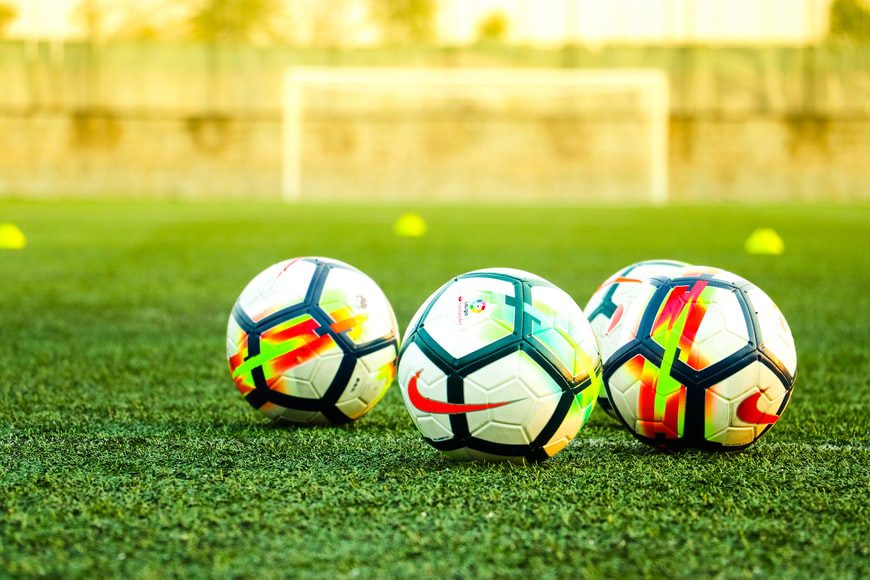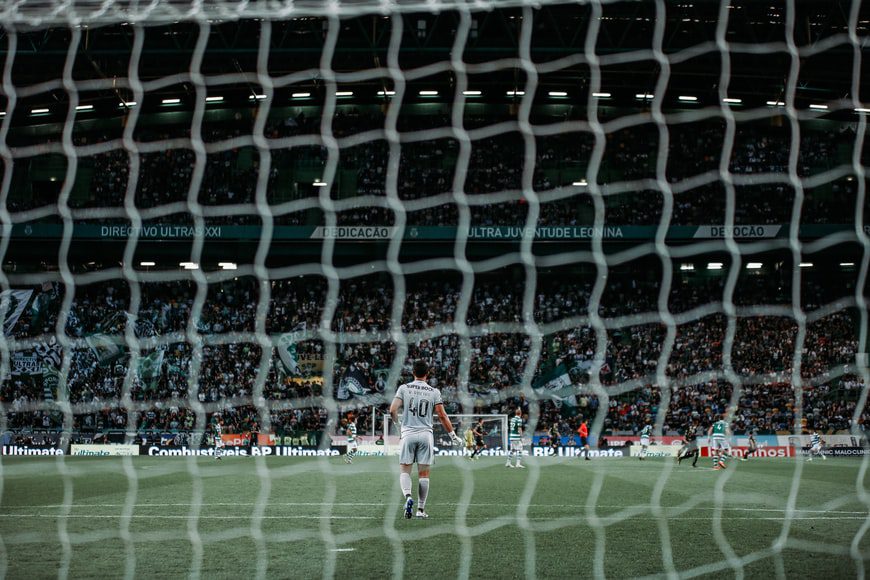Soccer Positions and Numbering Systems – Full Guide
Soccer positions are determined based on factors such as league, coaching strategy, number of players allowed on the field, and even age. We are going to look into the normal standard of an 11-vs-11 match to take into cognizance how defensive, midfield and offensive players collaborate on the pitch based on the numbers they wear.
Many football fans abound but not many know a lot about the history of the game. For instance, many football fans do not the origin of soccer numbers and positions in the round leather game.
Regardless, you should know that soccer position numbering started in the 1920s. Let’s look at the typical soccer position numbering below:
READ: Red Bull Football Teams Around the World
- Goalkeeper
- Right Fullback
- Left Fullback
- Center Back
- Center Back (or Sweeper, if used)
- Defending/Holding Midfielder
- Right Midfielder/Winger
- Central/Box-to-Box Midfielder
- Striker
- Attacking Midfielder/Playmaker
- Left Midfielder/Wingers
Role On The Soccer Pitch
Every position a footballer is representing has a unique job to keep the team playing squarely. For the feeders (younger players), knowing what soccer positions represent is ideal as knowing the role you’re assigned to play or the role that suits you.
As you develop your skill in your soccer career, your soccer position will shift a bit till you have a standardized number, which is not always certain. Having said that, let’s look at what the defensive, midfield, and offensive soccer positions mean.
READ: How Many Soccer Teams Are In London?
1. Defensive Soccer Positions
Goalkeeper (GK)
The Goalkeeper is the last line of defense to stop an offensive player from scoring a goal. The GK is often referred to as a Keeper or Goalie, the only player who can handle the ball with his hands and arms to make sure a goal does not enter.
Though, the handle of the ball with hands and arms is only applicable in the penalty area. If the handling is done outside the box, then it is a foul.
Also, when the ball is passed to the goalkeeper by a teammate, he is not permitted to touch the ball with his hands at the first touch. He is required to first stop the ball with his foot before picking it up. Some goalkeepers that have excelled in this role include Edwin Van Der Sar, Gianluigi Buffon, Peter Cech, and Oliver Khan, amongst others.
Defenders/Center-Backs
These are the players who support the keeper in preventing the offensive players of the opposition from scoring. They must block balls, defend strategically in the defense line, and clear balls if there’s no alternative to pass to the nearest teammate. in defenders, we have the center backs, fullbacks, wingbacks, and one sweeper.
READ: 7 Best PS4 Soccer Games
4/5 – Center Back (CB): These players are known as the central defender, stopper, or center fullback. There are those players who play in the middle of the rear defensive line. For instance, a formation of 4-4-2 is made up of two center-backs that are responsible for protecting the middle passage of offensive players.
3/2 – Fullback (LB, RB): These players are found on the left and right sides of the field and are often called outside fullbacks. Since their position is in the rear defense, they cover a wide area of the defensive line and can on some occasions, assist the center backs.
They equally go for offensive support when the need arises like when the team is pushing an attack against the opponent.
3/2 – Wingback (LWB, RWB): These players are also defenders but they more often play in the offensive position as a winger.
They cover the wide left and right, and the players here must have enough stamina and the ability to run as they’re often needed by the offensive teammates and by the defensive teammates.
This means that they will be running from defensive to offensive and from offensive to defensive throughout the course of a game.
5 – Sweeper (SW): Many coaches don’t use this position these days. When used in the past, they’re those players that situate themselves between the keeper and the main defensive line. Their role is to kick out or sweep out any ball that gets over the defensive backs.
Midfield Soccer Positions
You must have heard about midfielders or someone playing midfield positions. Yes, midfield players are always found in the middle of the pitch.
READ: How Many Players Are On A Soccer Team?
If a team is to be positioned, the midfielders are the engine to it as they can distribute passes to every angle of the pitch. Their role is to get the ball from the defensive line and distribute it to the offensive line. They are usually active in the gameplay and this position requires stamina and someone who is robust.
4 or 6 – Defensive Midfielder (DM): There also referred to as holding midfielders, and they play right in front of the defenders.
They basically must intercept opposition team passes and restrict balls from passing their zone, supporting the defensive line and moving the ball to the opposition area. In a formation of 3-4-3, the 4 players in this formation will flank the 6 as the two holding midfielders.
8 – Central Midfielder (CM): This position is tough and requires hard work from those playing here. Most players in this position must be agile and have good stamina as they will play both defensive and offensive depending on where the ball falls to.
Their work is to distribute the ball to free players to make sure the ball is with their teammates, so, they must be skilled in distributing passes and ball handling. To be properly positioned in the team, they play with the 6 in a defensive formation or the 10 in an offensive position.
10 – Attacking Midfielder (AM): These players are seen between the midfield and the offensive line. They must be skilled in how to score goals and dribble to avoid the opposition defenders.
They also attack the ball when the opposition team is with it. they’re just like the propeller of the offensive players as they direct the ball and also create space for offensive players to score.
READ: What Is The Offside Rule In Football?
11/7 – Left/Right Midfielder (LM, RM): These players are also called wingers or outside midfielders. They play wide and try to lure the opposition defenders out of their position thereby creating space for their offensive players to penetrate and score.
They must be skilled in how to dribble in 1-on-1 situations since they will always encounter the opposition players. Though they don’t receive passes from players too often, they see to get the ball and pass it to their offensive players through overpass or cross passes or trying to get the ball on their own.
Offensive Soccer Positions
These are the forward players or strikers as often called. Their primary duty is to attack the defensive position of their opponent and to score goals with any slightest opportunity they have.
The players here are very fast, robust, agile, and very hardworking as their position exposes them to major attacks from the opposition defenders. Also, they must know when they’re straying to the offside position.
9 – Center Forward (CF): The center forwards and strikers are closely related. Their only duty is to make sure they score a goal. Either they dribble the defenders and score or they stay to wait to get the ball and score by shot, heading, or either means permitted by football laws.
9 – Striker (S): This player is seen nearest to the opposition’s goal area, in front of their center forward. His only duty is to score. They are to stay positioned waiting for a pass or crossing to head the ball into the net, and they’re robust, fast, and very skilled in deciphering the opposition defenders.
READ: How Long Is A Soccer Game?
Should the opposition defense have the ball, strikers are to attack and pressure them to see they make mistakes and use the opportunity to score or get a penalty kick.
10 – Second Striker (SS): They are not often played in matches, but when played, you see them right behind the center forward and they must create opportunities for strikers to score or score the goal themselves.
These players must have the stamina to shield and protect their strikers when they have the ball to create good surroundings to score.
Final Words
Having a good formation doesn’t mean you can win the match easily, but having skilled and well-trained players is one big step to winning a match. When you know the responsibilities that follow the soccer position numbers and whom to place on each number, your gameplay will be shaped effectively.
READ: What Is A Box-To-Box midfielder In soccer?
You will be able to determine what works and what is not applicable and also, who is capable of playing a definitive position.
Well, if you’re a practicing coach, don’t get too carried by these positions as you keep coaching and associating with others, you know more about these positions and how to choose your first-eleven.

Kenneth is a an avid soccer follower, fan and writer. He is a consistent follower of the sport and is a fan of Chelsea FC.


